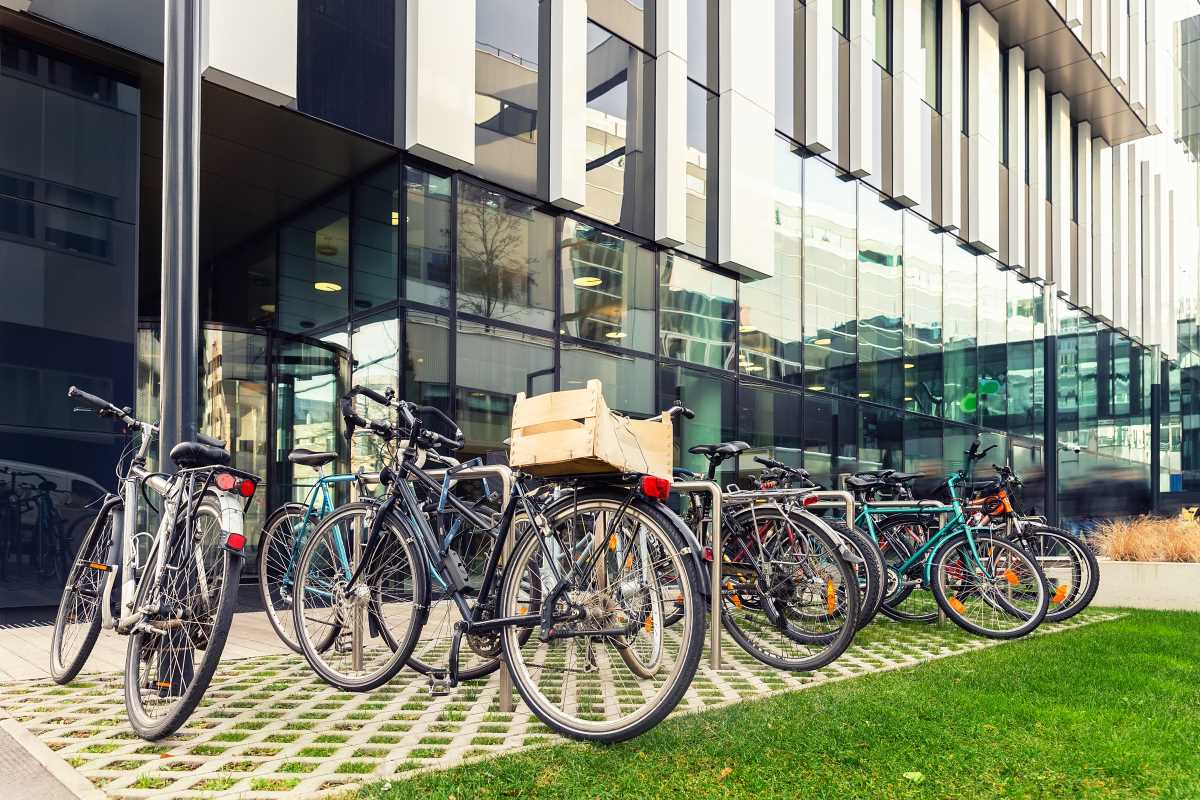As climate change accelerates and environmental challenges become increasingly urgent, educational institutions worldwide are taking bold steps toward sustainability. The "green campus" concept, which focuses on making university and college campuses more environmentally friendly, is evolving into a future-oriented vision that combines environmental stewardship with innovative, sustainable design. These campuses aim to reduce carbon footprints, conserve resources, and foster a culture of sustainability among students, faculty, and staff. The green campuses of the future will not only be hubs of education but also living laboratories for sustainability, preparing students to tackle global environmental issues.
Sustainable Architecture and Eco-Friendly Building Materials
The foundation of any green campus is its infrastructure, which increasingly emphasizes sustainability through eco-friendly architecture and building materials. Universities are moving away from conventional construction methods, opting for designs prioritizing energy efficiency, resource conservation, and environmental impact.
Key Features of Sustainable Buildings:
- Energy Efficiency: Green buildings are designed to minimize energy consumption. This is achieved through high-performance insulation, energy-efficient HVAC systems, and the use of renewable energy sources such as solar panels and wind turbines. Some campuses are aiming for net-zero energy buildings, meaning they produce as much energy as they consume.
- Green Roofs and Walls: Vegetation-covered green roofs help reduce the urban heat island effect, improve air quality, and provide insulation. Vertical gardens or living walls are also becoming a common feature, helping to improve campus aesthetics while promoting biodiversity.
- Sustainable Materials: Future campuses will use building materials with lower environmental impacts, such as recycled steel, bamboo, and reclaimed wood. Green building standards like LEED (Leadership in Energy and Environmental Design) are increasingly being adopted, ensuring that campuses meet rigorous sustainability criteria.
Smart Technology Integration for Sustainability
The campuses of the future will incorporate advanced technologies to enhance sustainability efforts. Smart technologies, driven by the Internet of Things (IoT), artificial intelligence (AI), and data analytics, can monitor and manage campus resources in real time, reducing waste and improving efficiency.
Examples of Smart Technologies:
- Energy Management Systems: By integrating smart grids and energy management software, campuses can track energy usage across various buildings and systems, identify inefficiencies, and make adjustments to reduce consumption. For instance, lights, heating, and air conditioning can be automatically adjusted based on occupancy and time of day.
- Waste Management: Smart waste bins equipped with sensors can monitor the fill levels of trash and recycling containers, alerting maintenance staff when they need to be emptied. This reduces unnecessary waste collection and ensures that resources are properly sorted and recycled.
- Water Conservation: Smart irrigation systems can optimize water usage on campus grounds, using weather data and soil moisture sensors to ensure that landscaping receives just the right amount of water, reducing waste.
Sustainable Transportation and Mobility
Transportation plays a significant role in campuses' environmental footprint, particularly in terms of greenhouse gas emissions. The green campuses of the future will prioritize sustainable mobility options, promoting alternatives to traditional gasoline-powered vehicles.
Green Transportation Solutions:
- Electric Vehicles (EVs): Many campuses are adopting electric vehicle fleets for campus shuttles and maintenance, reducing emissions and reliance on fossil fuels. Charging stations for electric cars and bikes are being installed across campuses to encourage students and staff to switch to electric vehicles.
- Bicycle Infrastructure: Cycling is a highly sustainable mode of transport, and future campuses will be designed to encourage it. Bike-sharing programs, ample bike racks, and dedicated bike lanes will make cycling a convenient and attractive option for students and staff.
- Public Transit and Carpooling: Green campuses will integrate with public transportation systems, offering incentives for students and faculty to use buses, trains, or carpooling options. Reduced parking spaces and the promotion of carpooling programs can help minimize individual car use.
Green Spaces and Biodiversity
Incorporating nature into campus design enhances a university's aesthetic appeal and contributes to the well-being of its inhabitants. Green spaces such as gardens, parks, and natural habitats are integral to the sustainability goals of future campuses.
Benefits of Green Spaces:
- Biodiversity: Future campuses will include natural habitats that support local wildlife, fostering biodiversity and helping to preserve native plant and animal species. These green areas may include urban forests, native gardens, and wildlife corridors.
- Health and Well-being: Research has shown that access to green spaces can reduce stress, improve mental health, and increase productivity. By creating serene, natural environments on campus, universities can improve the overall well-being of their students and staff.
- Stormwater Management: Green spaces can also help manage stormwater runoff, which is a significant issue in urban areas. Features like rain gardens, permeable pavements, and bioswales can absorb rainwater, reducing the risk of flooding and improving water quality.
Waste Reduction and Circular Economy Initiatives
The green campus of the future will implement comprehensive waste reduction and recycling programs, aiming to minimize landfill waste and promote a circular economy. This means that materials are reused, repurposed, or recycled instead of being discarded.
Circular Economy Strategies:
- Composting and Organic Waste Recycling: Campuses will invest in composting facilities to process food scraps, yard waste, and other organic materials. This will reduce the amount of organic waste sent to landfills and create nutrient-rich compost that can be used to fertilize campus gardens and landscapes.
- Zero-Waste Initiatives: Many universities are setting ambitious zero-waste goals to divert at least 90% of their waste away from landfills. This includes reducing packaging, promoting reusable containers, and providing students and staff with easy access to recycling and composting stations.
- Upcycling and Repurposing: Unused items and materials will be repurposed for new uses, such as innovatively turning old furniture into new designs or using construction waste. These practices contribute to reducing the demand for raw materials and minimize waste.
Sustainable Food Systems
Future campuses will reimagine their food systems to support sustainability, from sourcing local and organic foods to reducing food waste.
Sustainable Food Practices:
- Local and Organic Food: Green campuses will prioritize sourcing food locally and seasonally, supporting local farmers and reducing the carbon footprint of transporting food long distances. On-campus dining facilities may offer more plant-based options with a lower environmental impact than animal-based foods.
- Urban Agriculture: Some campuses incorporate urban farms, hydroponic gardens, or rooftop gardens to grow food on-site. This reduces food miles and provides students with hands-on opportunities to learn about sustainable agriculture.
- Food Waste Reduction: Universities will implement food waste reduction strategies, such as composting leftover food, donating excess food to local charities, and encouraging students to take only what they can eat in dining halls.
Education and Community Engagement
One of the most important aspects of green campuses is their educational role in promoting sustainability. Universities of the future will adopt sustainable practices and engage students in learning about environmental issues and solutions.
Promoting Sustainability Education:
- Curriculum Integration: Many universities are integrating sustainability into their curricula across various disciplines. Whether through dedicated environmental science programs or sustainability-focused courses in engineering, business, and design, students will be equipped with the knowledge to drive change in their future careers.
- Sustainability Initiatives: Green campuses will also encourage student-led sustainability initiatives, such as campus-wide recycling campaigns, clean energy projects, and environmental activism. These efforts empower students to take responsibility for their campus environment and develop leadership skills that can translate into real-world change.







